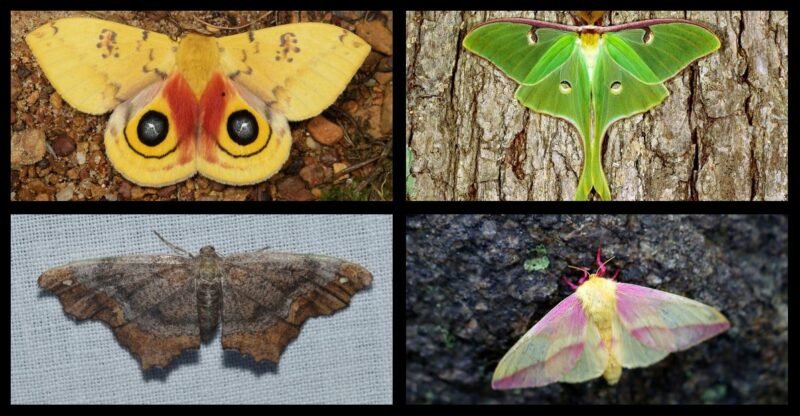
- This event has passed.
Moth Night at County Farm Park Medford Pavilion
August 25, 2023 @ 8:30 pm - 11:00 pm

We are having another moth party! Join us at County Farm Park for our August installment. Just as the species observed change throughout the night, so too do we see new species as we move through the calendar. It will be fun to see what we see at a new location and a month later.
Why care about moths? Ninety seven percent of all North American land birds rely on animal protein to raise their young. For most birds, that means insects. And for most of them, that means caterpillars. Without abundant moth larva, there is not enough animal protein to raise the young of our beloved birds. It takes approximately 9,000 caterpillars to raise one brood of Black-capped Chickadees from hatching to fledging! Now, think of all the birds you see out there. It’s hard to imagine the numbers required. So, you can see, moths are integral to the reproduction of most of our birds we love. They’re our allies in birding and getting to know them is a joy.
They are among the most diverse and successful organisms on earth. Scientists estimate there are 150,000 to more than 500,000 moth species. Their colors and patterns are either dazzling or so cryptic that they define camouflage. Shapes and sizes span the gamut from as small as a pinhead to as large as an adult’s hand. Most moths are nocturnal, and need to be sought at night to be seen – others fly like butterflies during the day. Finding them can be as simple as leaving a porch light on and checking it after dark. Serious moth aficionados use special lights and baits to attract them.
Once again, Susan Kielb and Heidi Trudell will guide us through the process of attracting, identifying, and enjoying these amazing creatures.
Suggestions for Attendees:
- A headlamp or flashlight would be nice to have.
- Ninja night with moths! Wearing black is the best way to keep moths on the sheet and not your shirt.
- It might be nice to bring a camp chair if you would like to sit.
Directions: Meet at the County Farm Park Pavilion at the entrance off Medford Road (map).
